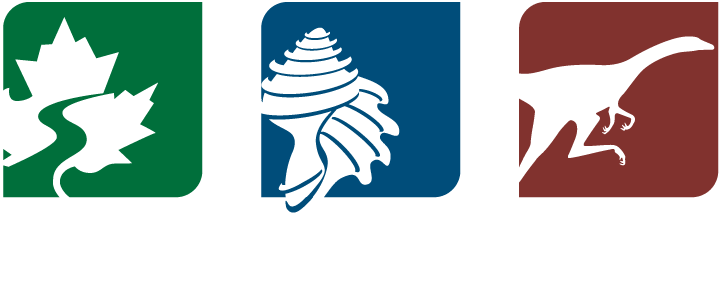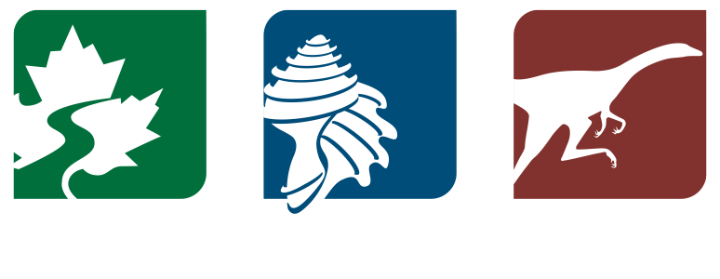HABs resources
General information
Websites
Climate change and Harmful Algal Blooms (U.S. Environmental Protection Agency): https://www.epa.gov/nutrientpollution/climate-change-and-harmful-algal-blooms
Cyanobacterial Harmful Algal Blooms (CyanoHABs) in water bodies (U.S. Environmental Protection Agency): https://www.epa.gov/cyanohabs
Ecophysiology and toxicity of the toxic alga Heterosigma akashiwo in Puget Sound: a living laboratory ecosystem approach (National Centers for Coastal Ocean Science): https://coastalscience.noaa.gov/project/toxicity-toxic-alga-heterosigma-akashiwo-puget-sound/
Harmful algae (U.S. National Office for Harmful Algal Blooms, Woods Hole Oceanographic Institution): https://hab.whoi.edu/
Harmful Algal Bloom (HAB)-Associated illness (Centers for Disease Control and Prevention): https://www.cdc.gov/habs/index.html
Harmful Algal Blooms (Virginal Institute of Marine Science): https://www.vims.edu/bayinfo/habs/index.php
Harmful Algal Blooms-economic impacts (Florida Department of Health): https://www.floridahealth.gov/environmental-health/aquatic-toxins/_documents/economic-impacts.pdf
Harmful Algal Bloom Forecasting (National Centers for Coastal Ocean Science, NOAA): https://coastalscience.noaa.gov/science-areas/habs/hab-forecasts/
Harmful Algal Blooms: Tiny organisms with a toxic punch (National Oceanic and Atmospheric Administration/NOAA): https://oceanservice.noaa.gov/hazards/hab/
Hitting us where it hurts: the untold story of harmful algal blooms (NOAA Northwest Fisheries Science Center): https://noaa.maps.arcgis.com/apps/Cascade/index.html?appid=9e6fca29791b428e827f7e9ec095a3d7
Northeast Harmful Algal Blooms (Woods Hole Oceanographic Institute): https://northeasthab.whoi.edu/
Water Q&A: What causes fish kills? (USGS): https://www.usgs.gov/special-topics/water-science-school/science/water-qa-what-causes-fish-kills
Articles
Anderson, D.M., E. Fachon, K. Hubbard, K.A. Lefebvre, P. Lin, R. Pickart, M. Richlen, G. Sheffield, and C. Van Hemert. 2022. Harmful algal blooms in the Alaskan Arctic: An emerging threat as the ocean warms.. Oceanography 35(3-4): 130-139. https://doi.org/10.5670/oceanog.2022.121
Glibert, P.M., D.M. Anderson, P. Gentien, E. Granéli, and K.G. Sellner. 2005. The global, complex phenomena of Harmful Algal Blooms. Oceanography 18(2): 136-147. https://tos.org/oceanography/assets/docs/18-2_glibert2.pdf
Scientific & technical papers
2021. Workshop on the socio-economic effects of marine and fresh water harmful algal blooms in the United States. Proceedings and recommendations for an assessment framework and research agenda, July 27 to August 5, 2020. U.S. National Office for Harmful Algal Blooms. PDF:
https://repository.library.noaa.gov/view/noaa/33455/noaa_33455_DS1.pdf
Carstensen, M.V., D. Zak, S.G.M. van’t Veen, K. Wisniewska, N.B. Ovesen, B. Kronvang, and J. Audet. 2021.Nitrogen removal and greenhouse gas fluxes from integrated buffer zones treating agricultural drainage water. Science of the Total Environment 774: 145070. https://doi.org/10.1016/J.SCITOTENV.2021.145070
Deirmendijian, L., J.-P. Descy, C. Morana, W. Okella, M.P. Soyneva-Gärtner, S. Bouillon, and A.V. Borges. 2021. Limnological changes in Lake Victoria since the mid-20th century. Freshwater Biology 66: 1630-1647. https://doi-org.proxy.library.cornell.edu/10.1111/fwb.13780
Ghimire, S.R., J. Corona, R. Parmar, G. Mahadwar, R. Srinivasan, K. Mendoza, and J.M. Johnston. 2021. Sensitivity of riparian buffer designs to climate change—nutrient and sediment loading to streams: A case study in the Albemarle-Pamlico River basins (USA) using HAWQS. Sustainability 13: 12380. https://doi.org/10.3390/SU132212380
Glibert PM. 2020. From hogs to HABs: impacts of industrial farming in the US on nitrogen and phosphorus and greenhouse gas pollution. Biogeochemistry 150: 139-180. https://doi.org/10.1007/S10533-020-00691-6
Kouakou, C.R.C., and T.G. Poder. 2019. Economic impact of harmful algal blooms on human health: a systematic review. Journal of Water & Health 17: 499-516. https://doi.org/10.2166/wh.2019.064
Mayzelle, M.M., J.H. Viers, J. Medellín-Azuara, and T. Harter. 2015. Economic feasibility of irrigated agricultural land use buffers to reduce groundwater nitrate in rural drinking water sources. Water 7: 12-37. https://doi.org/10.3390/W7010012
Nauer, R. 2017. Harmful algal blooms: An increasing problem and potential solutions. DU Quark 2: 55-62. https://dsc.duq.edu/duquark/vol2/iss1/9/
Phillips, E.M., J.E. Zamon, H.M. Nevins, C.M. Gibble, R.S. Duerr, and L.H. Kerr. 2011. Summary of birds killed by harmful algal bloom along the south Washington and north Oregon coasts during October 2009. Northwestern Naturalist 92: 120-126. https://www.jstor.org/stable/41300891
Prosser, R.S., P.F. Hoekstra, S. Gene, C. Truman, M. White, and M.L. Hanson. 2020. A review of the effectiveness of vegetated buffers to mitigate pesticide and nutrient transport into surface waters from agricultural areas. Journal of Environmental Management 261: 110210. https://doi.org/10.1016/J.JENVMAN.2020.110210
Ramesh, R., L. Kalin, M. Hantush, A. Chaudhary. 2021. A secondary assessment of sediment trapping effectiveness by vegetated buffers. Ecological Engineering 159: 106094. https://doi.org/10.1016/J.ECOLENG.2020.106094
Rastogi, R.P., D Madamwar, adn A. Incharoensakdi. 2015. Bloom dynamics of cyanobacteria and their toxins: Environmental health impacts and mitigation strategies. Frontiers in Microbiology 6: 1254. https://doi.org/10.3389/fmicb.2015.01254
Reeg, J., L. Strigl, and F. Jeltsch. 2022. Agricultural buffer zone thresholds to safeguard functional bee diversity: Insights from a community modeling approach. Ecology and Evolution 12: e8748. https://doi.org/10.1002/ECE3.8748
Sellner, K.G., G.J. Doucette, G.J. Kirkpatrick. 2003. Harmful algal blooms: causes, impacts and detection. Journal of Industrial Microbiology and Biotechnology 30: 383-406. https://doi.org/10.1007/S10295-003-0074-9
Trainer, V.L., and T. Yoshida (editors). 2014. Proceedings of the workshop on economic impacts of harmful algal blooms on fisheries and aquaculture. PICES Scientific Report 47. PDF: https://meetings.pices.int/publications/scientific-reports/Report47/Rpt47.pdf
Trainer, V.L. (editor). 2020. GlobalHAB. Evaluating, reducing and mitigating the cost of harmful algal blooms: a compendium of case studies. PICES Scientific Report 59. PDF: https://meetings.pices.int/publications/scientific-reports/Report59/Rpt59.pdf
Identifying HABs
Harmful Algal Blooms (HABs) photo gallery (New York State Department of Environmental Conservation): https://www.dec.ny.gov/chemical/81962.html
Harmful Algal Blooms: How to identify algal blooms in freshwater (Indiana State Department of Health): https://watershedfoundation.org/wp-content/uploads/2020/07/How-to-Identify-Harmful-Algal-Blooms.pdf
How to identify harmful algal blooms (HABs): Tips and tricks (NYSDEC on YouTube): https://youtu.be/8nL_s77FV-o?feature=shared
Identifying a Harmful Algal Bloom (HAB) (California State Water Control Board): https://mywaterquality.ca.gov/habs/what/visualguide_fs.pdf
Finger Lakes (New York, U.S.A.)
Websites
Bloom: The toxic threat to the Finger Lakes (PBS): https://ny.pbslearningmedia.org/collection/bloom-the-toxic-threat-to-the-finger-lakes/
Cayuga Lake HABs reporting page (Community Science Institute): http://www.communityscience.org/monitoring-partnerships/harmful-algal-bloom-monitoring/cayuga-lake-habs-reporting-page/
Cayuga Lake: Past & present (Cayuga Nature Center): https://www.cayuganaturecenter.org/cayuga-lake-welcome
Harmful Algal Blooms (HABs) (Cayuga Lake Watershed Network): https://www.cayugalake.org/harmful-algal-blooms/
Harmful Algal Blooms (HABs) (Tompkins County, New York): https://www.tompkinscountyny.gov/health/habs
Life in the Finger Lakes series introducing the 11 lakes (by Kyra Bean, 2001): https://www.lifeinthefingerlakes.com/part-1-conesus-lake-the-westernmost-finger-lake/
Toxic algae in the Finger Lakes (Finger Lakes Land Trust): https://www.fllt.org/toxic-algae-in-the-finger-lakes/
News stories
Mantius, P. 2018. Toxins from Canandaigua algal bloom infect town’s water, force drinking ban. WaterFront, 12 October 2018. https://waterfrontonline.blog/2018/10/12/toxins-from-canandaigua-algal-bloom-infect-towns-water-force-drinking-ban/
Mantius, P. 2021. Cayuga Lake leads state in toxic algae blooms. The Ithaca Voice, 12 August 2021. https://ithacavoice.org/2021/08/cayuga-lake-leads-state-in-toxic-algae-blooms/
Tyagi, S. 2021. Recurring Cayuga Lake harmful algal blooms point to emerging ecological patterns. Cornell Daily Sun, 30 August 2021. https://cornellsun.com/2021/08/30/recurring-cayuga-lake-harmful-algal-blooms-point-to-emerging-ecological-patterns/
USGS Communications and Publishing. 2019. USGS kicks off project to study harmful algal blooms in New York. USGS State News Release, 15 May 2019. https://www.usgs.gov/news/state-news-release/usgs-kicks-innovative-project-study-harmful-algal-blooms-new-york
Scientific papers
Wang, N., N. Mark, N. Launer, A. Hirtler, C. Weston, L. Cleckner, C. Faehndrich, L. LaGorga, L. Xia, D. Pyrek, S.M. Penningroth, and R.E. Richardson. 2024. Harmful algal blooms in Cayuga Lake, NY: From microbiome analysis to eDNA monitoring. Journal of Enivronmental Management 354: 120128. https://doi.org/10.1016/j.jenvman.2024.120128
Lake Victoria (Kenya, Tanzania, and Uganda)
News stories
Smith, K. 2023. BGSU researchers study algal bloom in Lake Victoria similar to toxins found in Lake Erie. The Helm, 1 November 2023. https://www.thehelmsandusky.com/features/BGSULakeVictoria.aspx
Scientific papers
Mchau, G.J., E. Makule, R. Machunda, Y.Y. Gong, and M. Kimanya. 2019. Harmful algal bloom and associated health risks among users of Lake Victoria freshwater: Ukerewe Island, Tanzania. Journal of Water & Health 17: 826-836. https://doi.org/10.2166/wh.2019.083
Olokotum, M., V. Mitroi, M. Troussellier, R. Semyalo, C. Bernard, B. Montuelle, W. Okello, C. Quiblier, and J.-F. Humbert. 2020. A review of the socioecological causes and consequences of cyanobacterial blooms in Lake Victoria. Harmful Algae 96: 101829. https://doi.org/10.1016/j.hal.2020.101829
Roegner, A.F., J.R. Corman, L.M. Sitoki, Z.A. Kwena, Z. Ogari, J.B. Miruka, A. Xiong, C. Wierich, C.M. Aura, T.R. Miller. 2023. Impacts of algal blooms and microcystins in fish on small-scale fishers in Winam Gulf, Lake Victoria: implications for health and livelihood. Ecology & Society 28: 49. https://doi.org/10.5751/ES-13860-280149
Cornell research
Articles
Friedlander, B. 2020. NSF to fund study on far-reaching algal bloom impacts. Cornell Chronicle, 18 September 2020. https://news.cornell.edu/stories/2020/09/nsf-fund-study-far-reaching-algal-bloom-impacts
Scientific papers
Aura, C.M., A. Roegner, H. Owiti, D. Birungi, K.J. Fiorella, J. Corman, R. Kayanda, P. Mbullo, C.S. Nyamweya, G. Mchau, M. Daniels, 2022. Mind the gaps for the best practices: Enhancing the management of Lake Victoria fisheries resources. Lakes & Reservoirs 27: e12411. https://doi.org/10.1111/lre.12411
Fiorella, K.J., M.D. Hickey, C.R. Salmen, J.M. Nagata, B. Mattah, R. Magerenge, C.R. Cohen, E.A. Bukusi, J.S. Brashares, and L.H. Fernald. 2014. Fishing for food? Analyzing links between fishing livelihoods and food security around Lake Victoria, Kenya. Food Security 6: 851-860. https://doi.org/10.1007/s12571-014-0393-x
Fiorella, K.J., E.M. Milner, E. Bukusi, and L.C.H. Fernald. 2018. Quantity and species of fish consumed shape breast-milk fatty acid concentrations around Lake Victoria, Kenya. Public Health Nutrition 21: 777-784. https://doi.org/10.1017/S1368980017003147
Ziegler, C.S., A.F. Roegner, C.M. Aura, and K.J. Fiorella. 2022. Social constructions of health-environmental risks: a comparison of fishing community and expert perceptions of cyanobacterial blooms. Society & Natural Resources. https://doi.org/10.1080/08941920.2022.2135151
Other lakes
Lake Erie (Canada and U.S.A.)
Websites
Algal bloom in Lake Erie (NASA Earth Observatory): https://earthobservatory.nasa.gov/images/86327/algae-boom-in-lake-erie
Five years later: Lessons from the Toledo water crisis (Alliance for the Great Lakes): https://greatlakes.org/2019/08/five-years-later-lessons-from-the-toledo-water-crisis/
Lake Erie (US Environmental Protection Agency): https://www.epa.gov/greatlakes/lake-erie
NOAA, partners predict large summer harmful algal bloom for western Lake Erie (NOAA, 2019): https://www.noaa.gov/media-release/noaa-partners-predict-large-summer-harmful-algal-bloom-for-western-lake-erie
Toxic algae bloom in Lake Erie (NASA Earth Observatory): https://earthobservatory.nasa.gov/images/76127/toxic-algae-bloom-in-lake-erie
Lake Tai (China)
Articles
Associated Press. 2007. Algae smother Chinese lake, millions panic. NBC News, 31 May 2007. https://www.nbcnews.com/id/wbna18959222
Jacobs, A. 2014. Despite persecution, guardian of Lake Tai spotlights China’s polluters. The New York Times, 23 November 2014. https://www.nytimes.com/2014/11/24/world/despite-persecution-guardian-of-lake-tai-spotlights-chinas-polluters.html
Stone, R. 2011. On Lake Taihu, China moves to battle massive algae blooms. Yale Environment 360, 21 July 2011. https://e360.yale.edu/features/on_lake_taihu_china_moves_to_battle_massive_algae_blooms
Scientific papers
Duan, H., S.A. Loiselle, L. Zhu, L. Feng, Y. Zhang, and R. Ma. 2015. Distribution and incidence of algal blooms in Lake Taihu. Aquatic Science 77: 9-16. https://doi.org/10.1007/s00027-014-0367-2
Qin, B., G. Zhu, G. Gao, Y. Zhang, W. Li, H.W. Paerl, and W.W. Carmichael. 2010. A drinking water crisis in Lake Taihu, China: linkage to climatic variability and lake management. Environmental Mangement 45: 105-112. https://doi.org/10.1007/s00267-009-9393-6
Lake Villarrica (Chile)
Websites
Algae in the Andes (NASA Earth Observatory): https://earthobservatory.nasa.gov/images/151363/algae-in-the-andes
News stories
Núñez, T. 2023. Sigue el problem: Nuevo bloom de algas en lago Villarrica altera a la comunidad. Ladera Sur, 17 May 2023. https://laderasur.com/articulo/sigue-el-problema-nuevo-bloom-de-algas-en-lago-villarrica-alerta-a-la-comunidad/
Scientific papers
Nimptsch, J., S. Woelfl, S. Osorio, J. Valenzuela, C. Moreira, V. Ramos, R. Castelo-Branco, P. Nuno Leão, and V. Vasconcelos. 2016. First record of toxins associated with cyanobacterial blooms in oligotrophic North Patagonian lakes of Chile—a genomic approach. International Review of Hydrobiology 101: 57-68. https://doi.org/10.1002/iroh.201401780
Lake Windermere (U.K.)
News stories
James, L. 2022. Sewage: Why toxic algae on Lake Windermere is only the start of what’s to come. Independent 21 August 2022. https://www.independent.co.uk/climate-change/news/raw-sewage-windermere-water-algae-b2146970.html#comments-area
Thackeray, S. 2022. Extensive algal blooms in England’s lakes: here’s why. The Conversation, 26 August 2022. https://theconversation.com/extensive-algal-blooms-in-englands-lakes-heres-why-189481
Scientific papers
Fielding, J.J., I.W. Croudace, A.E.S. Kemp, R.B. Pearce, C.J. Cotterill, P. Langdon, and R. Avery. 2020. Tracing lake pollution, eutrophication and partial recovery from the sediments of Windermere, UK, using geochemistry and sediment microfabrics. Science of the Total Environment 722: 137745. https://doi.org/10.1016/j.scitotenv.2020.137745
Development of the Harmful Algal Blooms (HABs) section of the Cayuga Nature Center website was supported by a National Science Foundation grant to Kathryn Fiorella, Christopher Barrett, and Peter McIntyre of Cornell University (BCS 2009658). The views, findings, conclusions, or recommendations expressed in this website do not necessarily represent those of the National Science Foundation.

